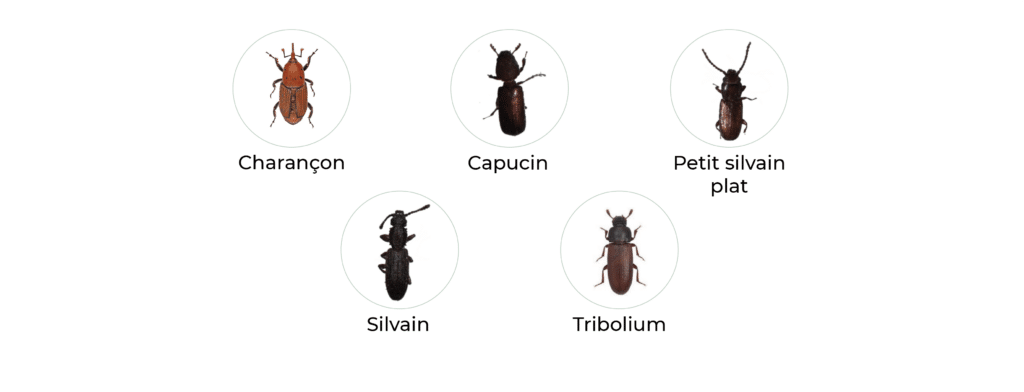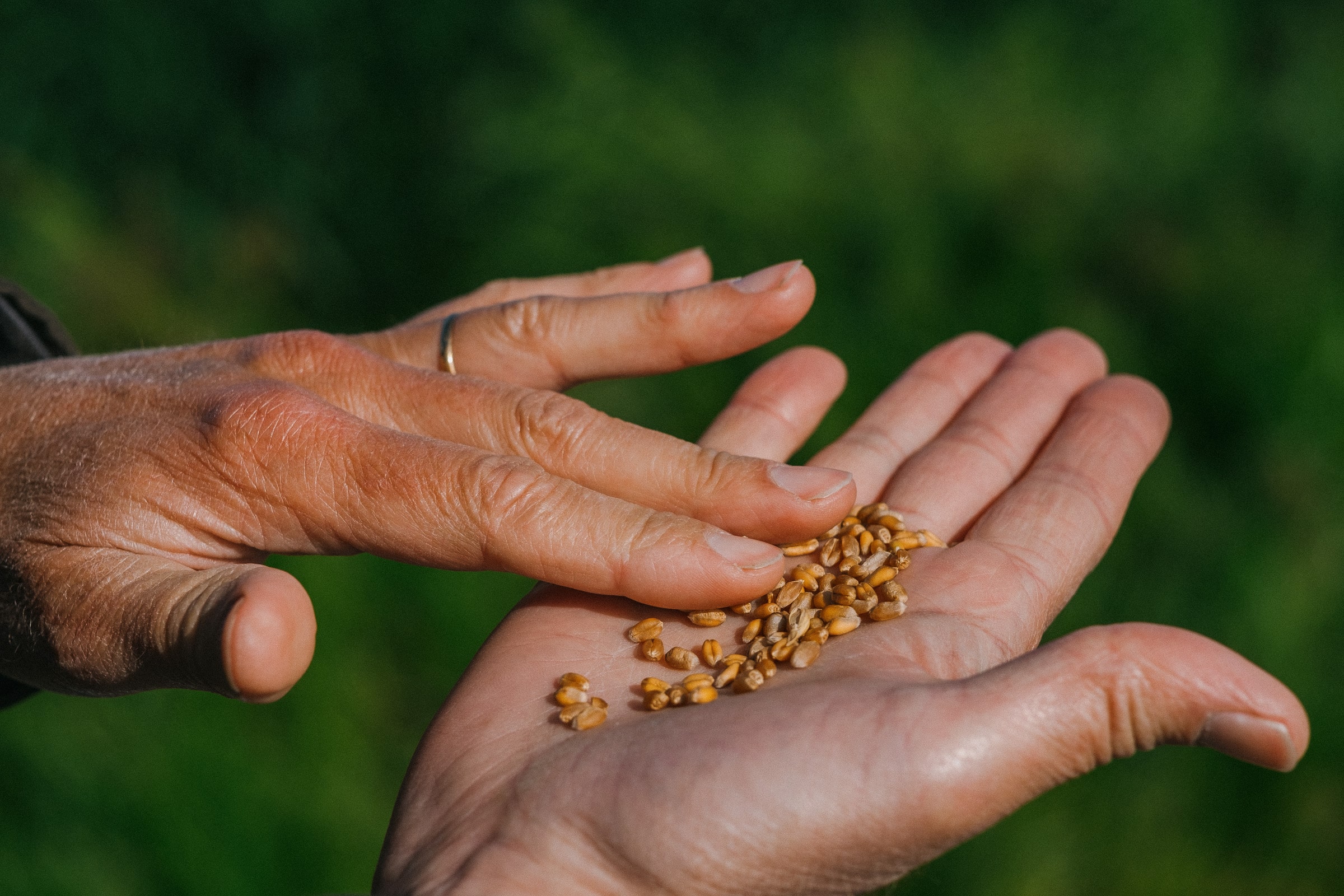Despite the efforts made throughout the year to eliminate potential insect nests, every year there is a risk that pests will develop again. We can often hear that "they certainly come from the fields, it is not possible otherwise". Well, the main pests in storage (weevils, capuchins, tribolium, grain beetles) do not live in the fields.
Primary or secondary storage insects?
There are two main categories of insect pests which are harmful for the stored grain:
- Primary insect pests : They attack whole, healthy grain as soon as they have infested the silo. Among the most common are weevils (wheat weevil, rice weevil), bruchids and flour moths. Only the adults are visible, which makes detection and control more difficult; these are also known as hidden form insects.
- Secondary insect pests: They attack grain, which has already been damaged by primary insects, mould or handling. Among the most common are grain beetles, triboliums and capuchins. These develop outside the grain, so their larvae and pupae are visible in infested stock. These are also known as free-form insects.
So where do they come from?
Wherever grain remains after use of machinery, handling systems or storage areas, insects can develop. In short, a few kilos of grain or dust in a combine harvester or the cracks in a bin can be enough to cause an infestation.
Can you recognise them?

Prevention is better than cure
As you can see, a grain storage can quickly find itself exposed to the risk of insect development. Preventive measures need to be taken at various levels to control this risk, in particular real-time monitoring of temperature trends in stocks using connected temperature probes and optimum control of ventilation in the silos to ensure cooling that will prevent insects from developing.

